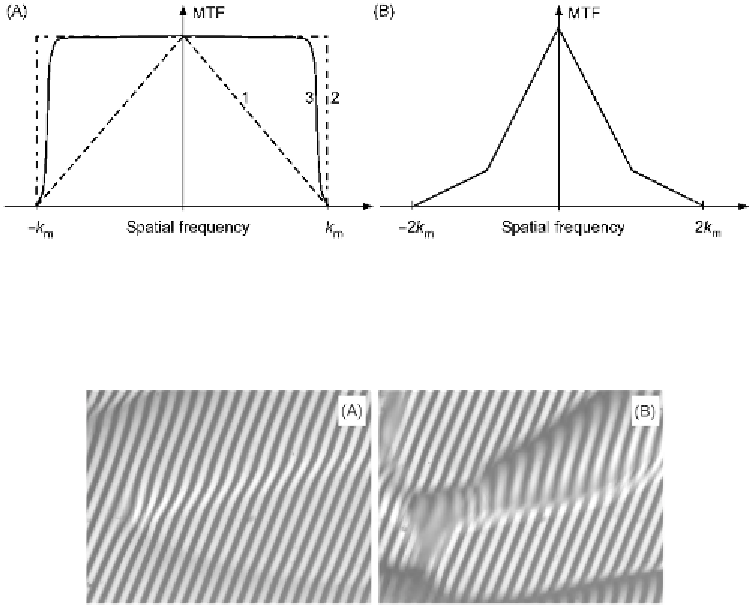Biomedical Engineering Reference
In-Depth Information
Figure 16.4
MTFs for SIM. (A) Illumination MTF with (1) incoherent illumination, (2) coherent laser
excitation, and (3) partially-coherent illumination; (B) one-dimensional MTF for SIM imaging with
coherent illumination.
Figure 16.5
Phase objects observed with SIM, where there is a small focal offset between the object and the
superimposed grating pattern. (A) Small phase variation (
,
π
) and (B) substantial phase variation
(
.
π
).
using spatially partially-coherent illumination. On the other hand, fluorescence imaging uses
coherent excitation, and the coherent MTF remains unity out to the resolution limit. The
MTF for the complete imaging process has been studied by Somekh et al.
[24]
.
The question remains—can SIM be modified to record phase information at super-resolved
frequencies? To our knowledge, this has not been discussed specifically in the literature.
First, we note that the product of the illumination pattern with an amplitude image retains
the phase of the illumination pattern. Now suppose we have a thick object with phase
gradients. Then, when the illumination grating is projected onto the object, the phase
information is recorded as phase modulation in the image (
Figure 16.5
), which can be
extracted algorithmically in the following manner.
Although strictly only three images with different phases are necessary, it is easier to
appreciate the phase-imaging algorithm when four SIM images are acquired, with


Search WWH ::

Custom Search